Ecosystem Class 12 Notes

Chapter 14 Ecosystem
NCERT notes Class 12 Biology Chapter 14 will help students boost their preparations for their board exams. Vidyakul offers students detailed NCERT notes for Class 12 Biology Chapter 14 Ecosystem in this article which cover in-text exercises for all topics.
Vidyakul’s subject experts have prepared these solutions to help students understand the exam pattern, and the notes sets have been prepared as per the latest curriculum. This article lets students access the NCERT notes for Class 12 Biology Ecosystem. Continue reading to know more.
CBSE CLASS 12th BIOLOGY CH-14
Points to Remember
We have also provided a few important points to remember from NCERT 12th Biology Chapter 14 Ecosystem to help students in their exam preparations:
Biosphere is the largest and most nearly self-sufficient biological system, and it can also be called ecosphere.
Ecosystem is a community of living organisms and the physical environment, both interacting and exchanging materials between them.
Ecosystems are recognised as self-regulating and self-sustaining units of the landscape.
Abiotic and biotic components constantly interact with each other bringing forth structural and functional changes in the biosphere.
Ecosystem has two major components:
Biotic
Abiotic
Biotic components include primary producers, consumers and decomposers.
Abiotic components are physical factors such as climatic, edaphic and topographic.
An ecological pyramid is a graphic representation to illustrate the relations of the number, biomass and energy in an ecosystem.
Ecological succession is the colonisation of the habitat as a result of orderly and sequential changes taking place corresponding to the changes in the physical environment.
Topics and Sub-topics
An ecosystem can be visualised as a functional unit of nature, where living organisms interact among themselves and the surrounding physical environment. The ecosystem varies significantly in size, from a small pond to a large forest or a sea. Many ecologists regard the entire biosphere as a global ecosystem, a composite of all local ecosystems. Since this system is too big and complex to be studied at one time, it is convenient to divide it into two basic categories, namely terrestrial and aquatic.
In this chapter, students will learn about the ecosystem’s structure, followed by the relationships of the ecosystem. The important topics covered in NCERT Class 12 Biology Chapter 14 Ecosystem are given below:
Biosphere is the largest and most nearly self-sufficient biological system, and it can also be called ecosphere.
Ecosystem is a community of living organisms and the physical environment, both interacting and exchanging materials between them.
Ecosystems are recognised as self-regulating and self-sustaining units of the landscape.
Abiotic and biotic components constantly interact with each other bringing forth structural and functional changes in the biosphere.
Ecosystem has two major components:
Biotic
Abiotic
Biotic components include primary producers, consumers and decomposers.
Abiotic components are physical factors such as climatic, edaphic and topographic.
An ecological pyramid is a graphic representation to illustrate the relations of the number, biomass and energy in an ecosystem.
Ecological succession is the colonisation of the habitat as a result of orderly and sequential changes taking place corresponding to the changes in the physical environment.
Learn more about it in Ecosystem Class 12 Notes pdf.
Download this solution for FREE Download this PDF
Download Vidyakul App for more videos, PDF's and Free video lectures.


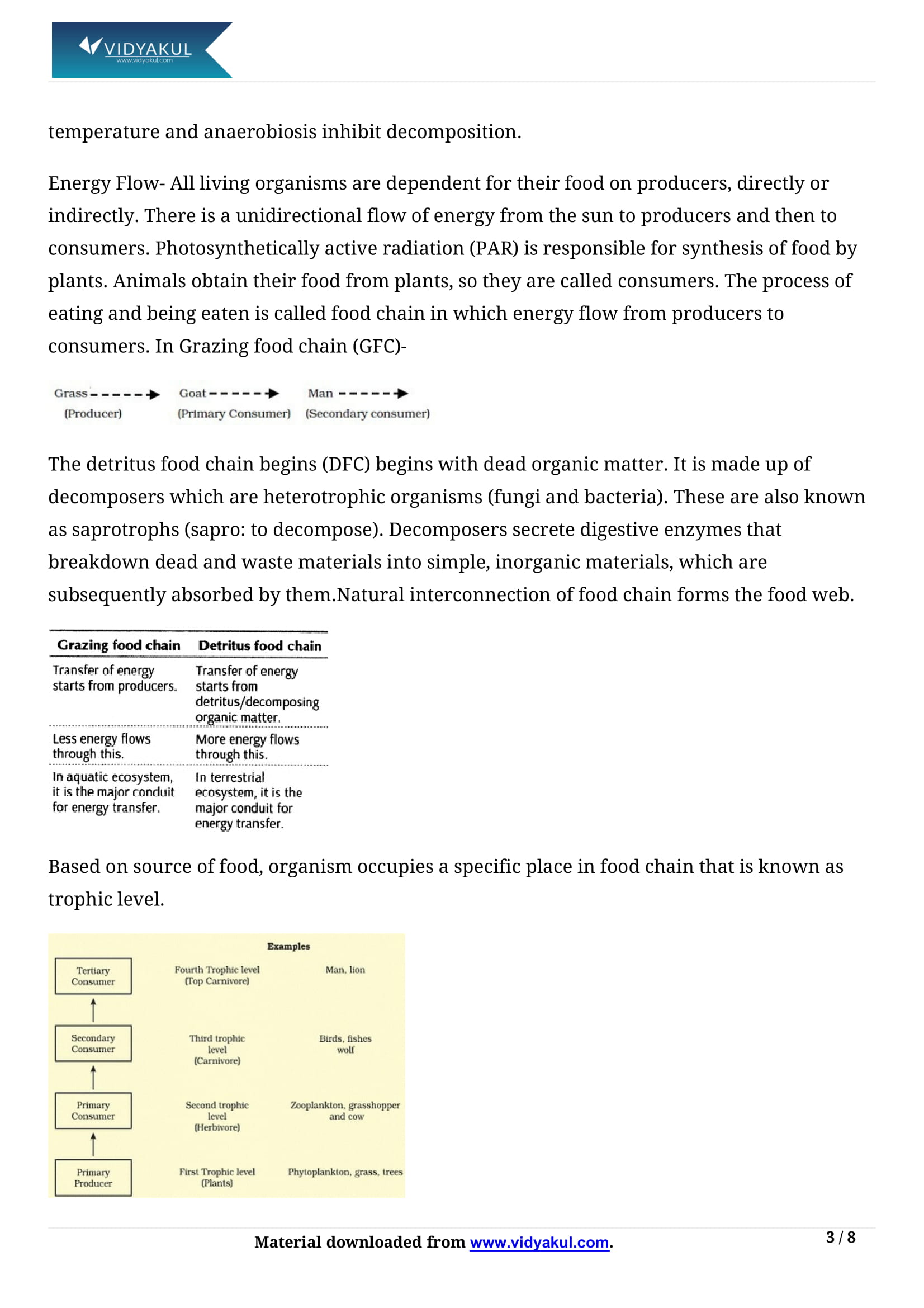
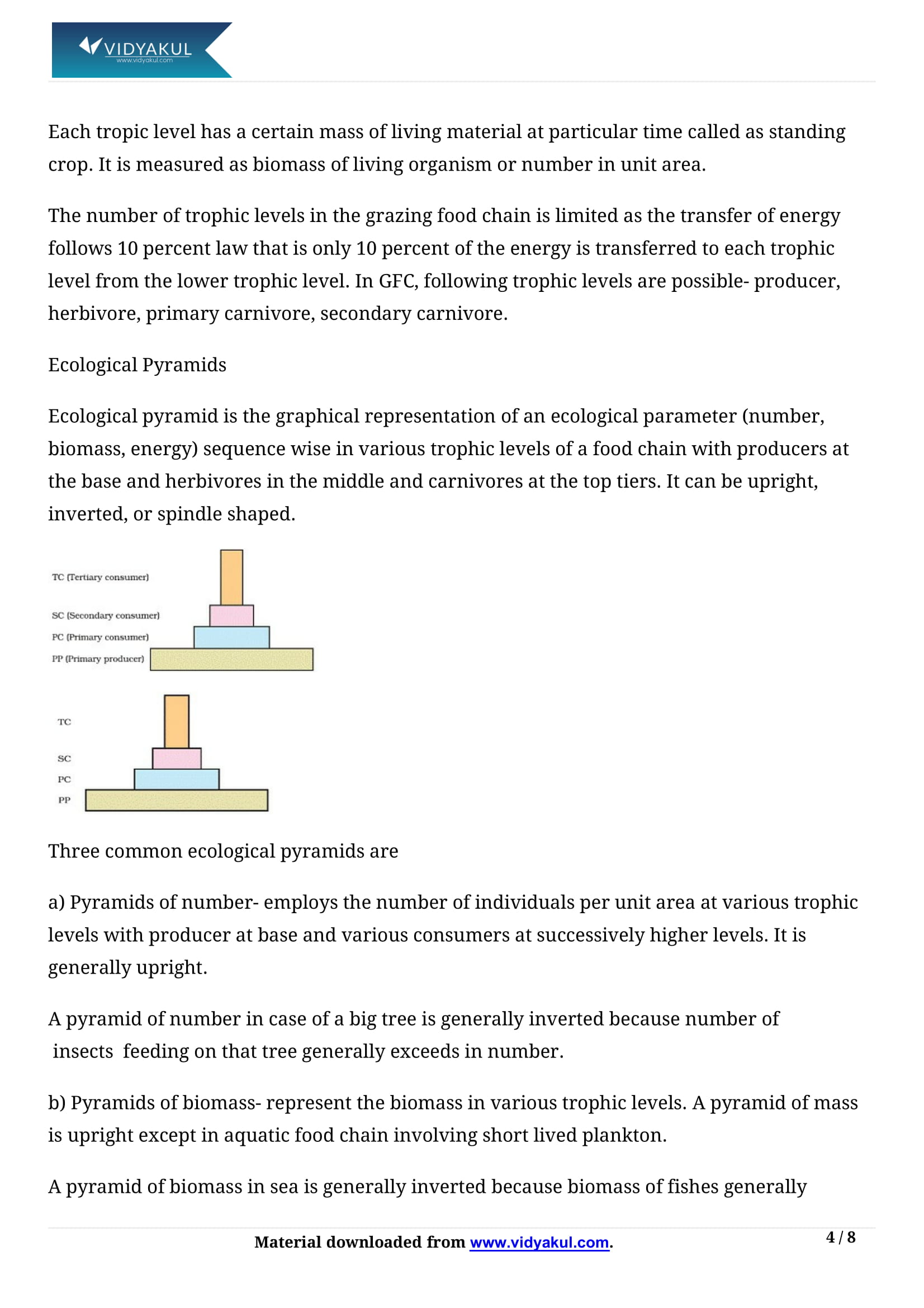
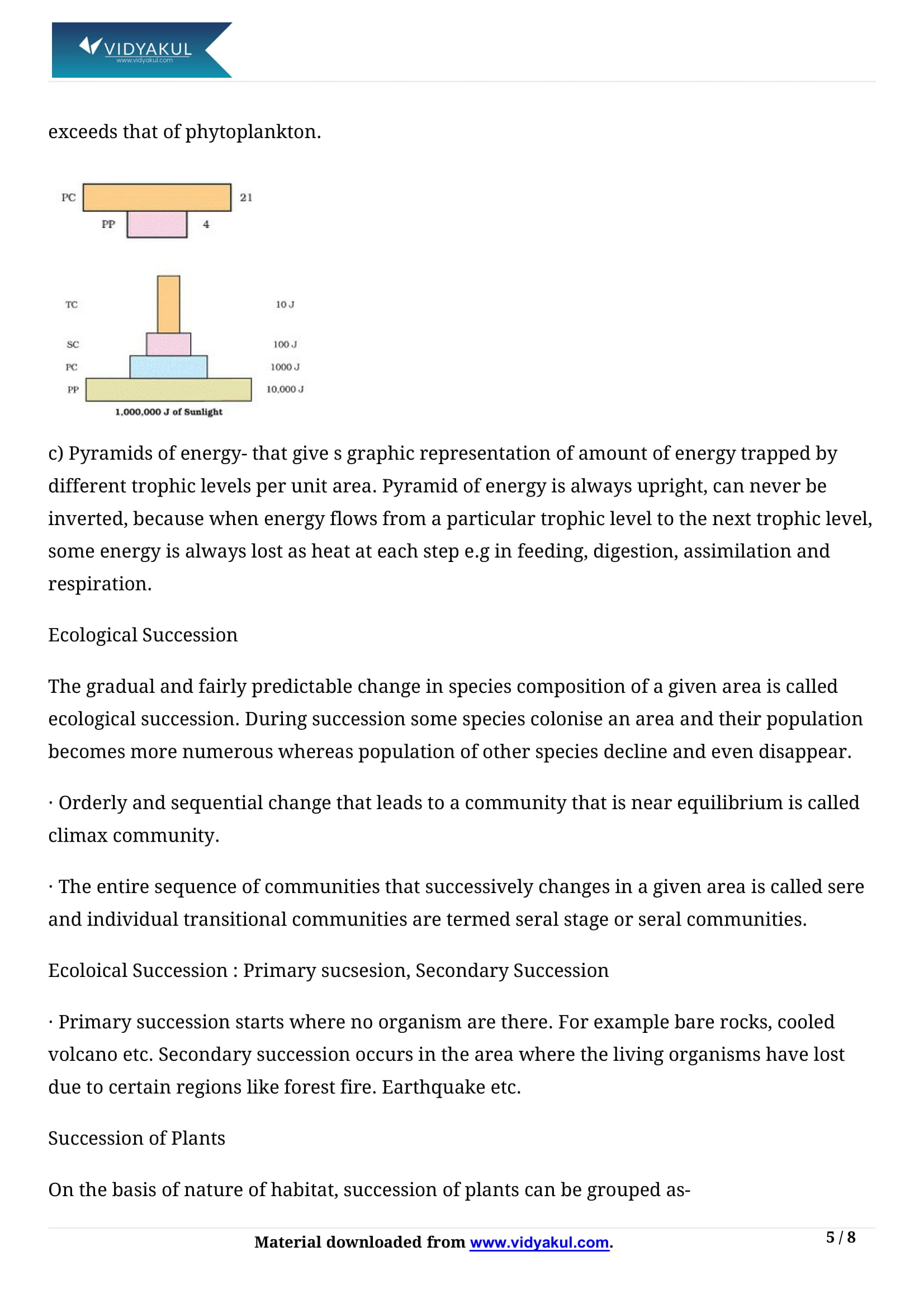
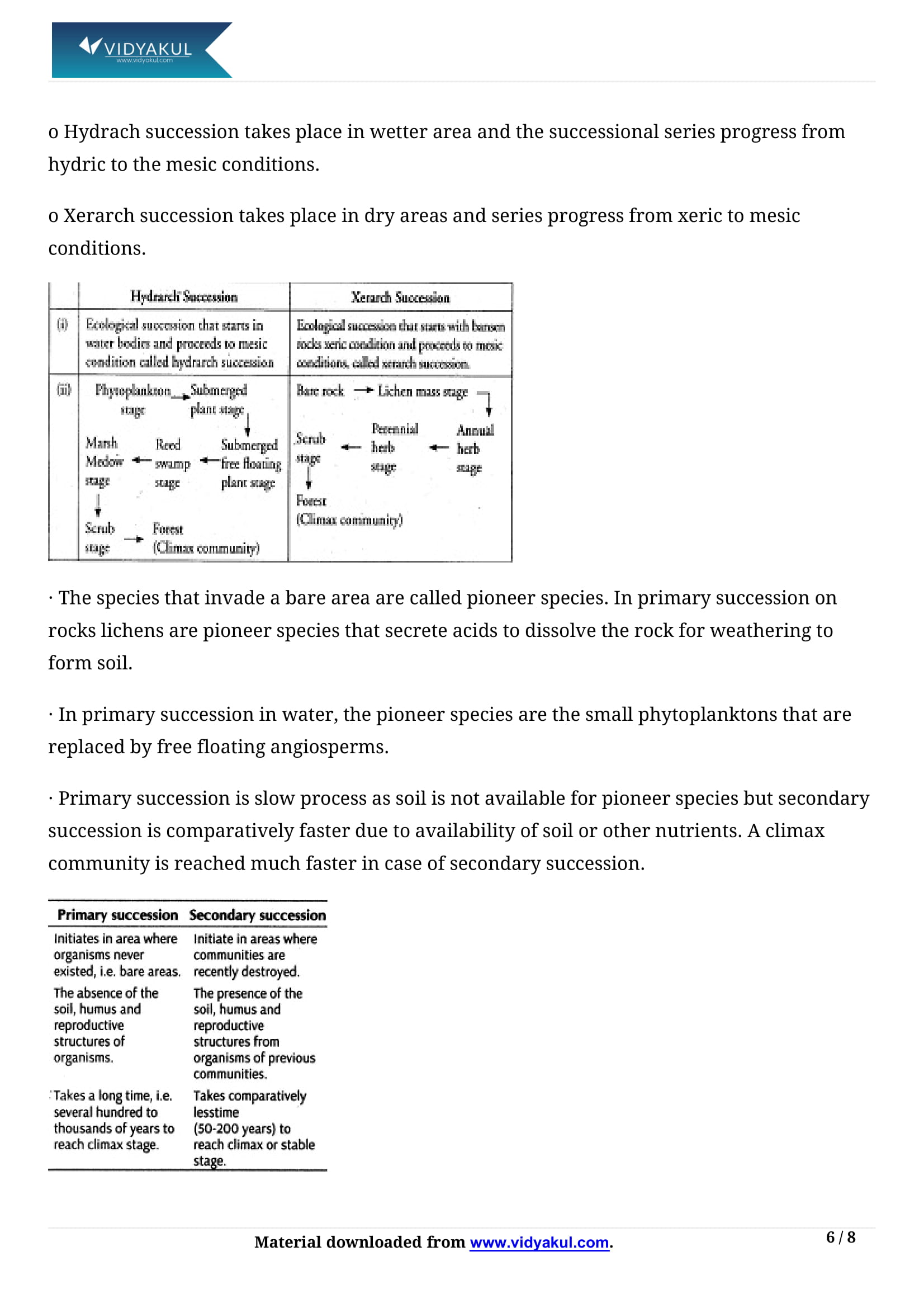
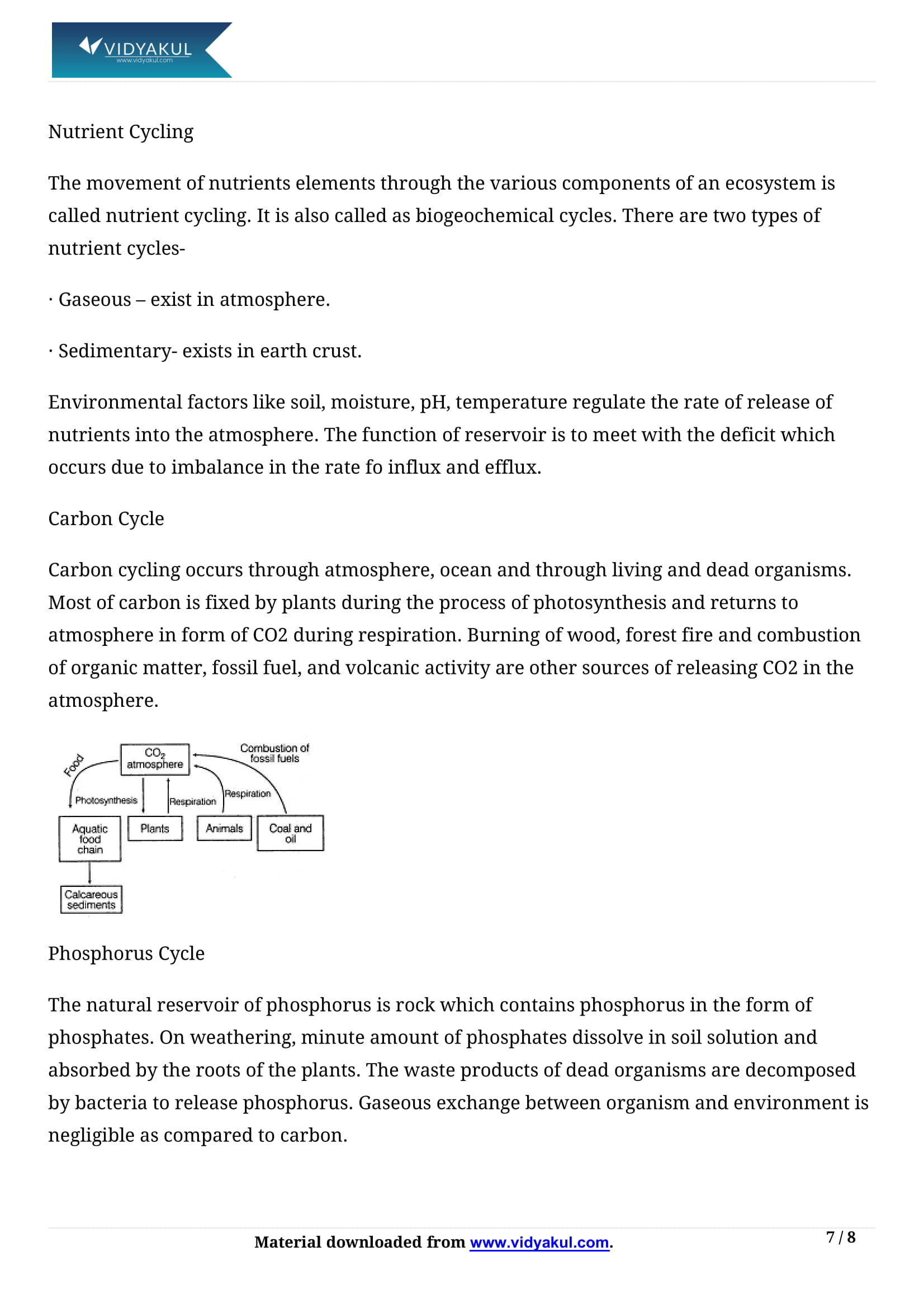
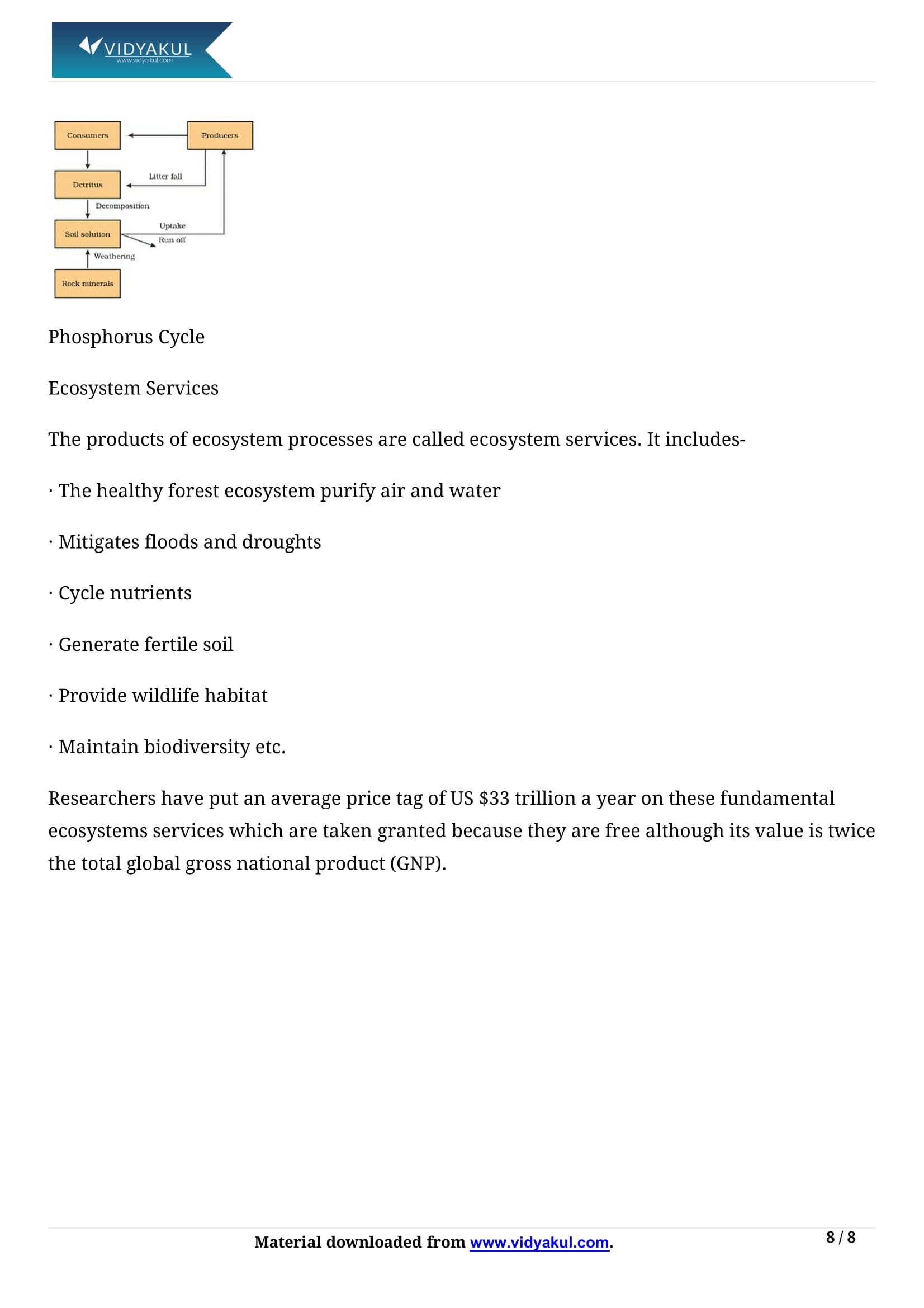
Important Links:
Frequently Asked Questions
What is the definition of an ‘Ecosystem’?
Ecosystem can be defined as an area where plants, animals and other organisms, as well as weather and landscape, work together to form a bubble of life.
What are the different types of ‘Ecosystem’?
There are 4 main types of Ecosystems: 1. Forest ecosystem 2. Grassland ecosystem 3. Tundra ecosystem 4. Desert ecosystem
What are the main differences between ‘Biotic’ and ‘Abiotic’?
Abiotic factors refer to non-living physical and chemical elements in the ecosystem. Whereas, Biotic describes a living component of an ecosystem.
What is the definition of an ‘Ecosystem’?
What are the different types of ‘Ecosystem’?
What are the main differences between ‘Biotic’ and ‘Abiotic’?
Practice Questions
What is Nutrient cycling?
What is primary productivity?
Explain the components of an ecosystem?
Define ecological pyramids with examples?
List out the differences between Food chain and Food web?
What is Nutrient cycling?
What is primary productivity?
Explain the components of an ecosystem?
Define ecological pyramids with examples?
List out the differences between Food chain and Food web?



